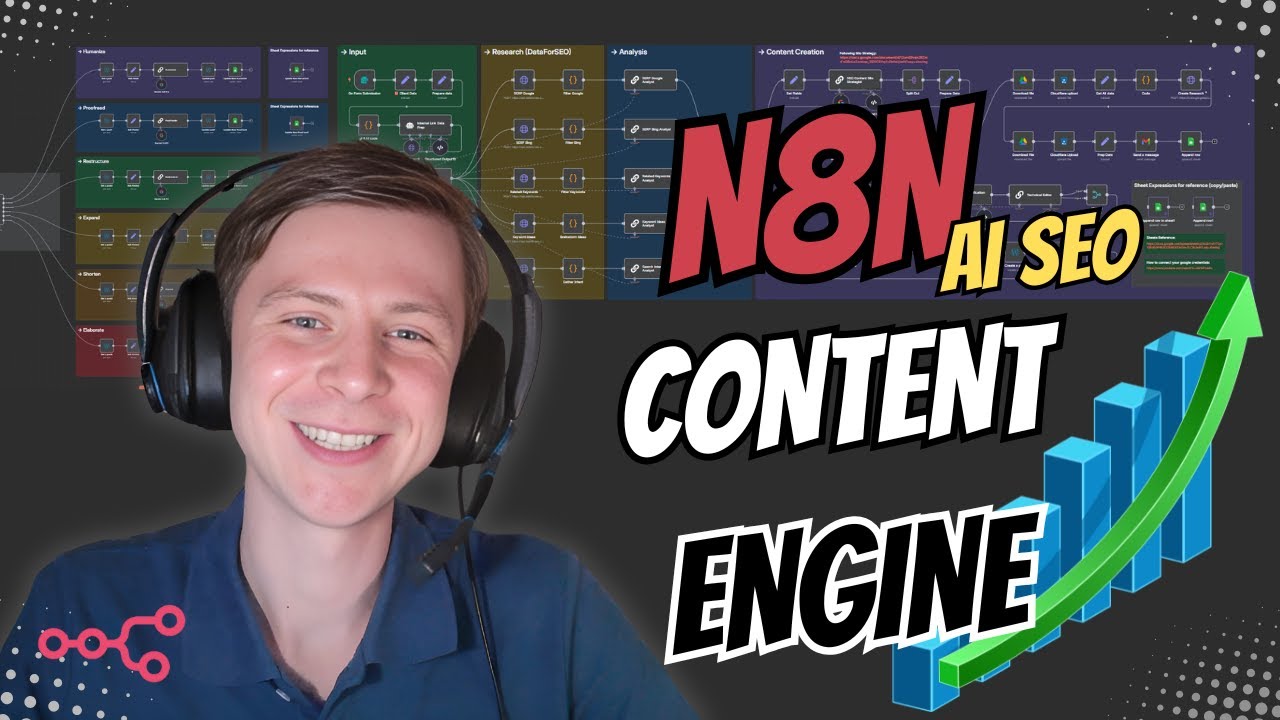Blog
Automate a Week of SEO blogs with AI (Full Strategy)

Automate Your Weekly SEO Blogs with AI: A Comprehensive Strategy
In today’s digital age, content creation is crucial for maintaining an online presence. One of the most effective ways to enhance visibility on search engines is through SEO-optimized blogs. With advancements in artificial intelligence (AI), automating your blog creation process has become increasingly viable. This guide will explore a complete strategy to automate a week’s worth of SEO blogs using AI tools, ensuring your content is both effective and engaging.
The Importance of SEO in Blogging
Before diving into automation strategies, it’s essential to understand why SEO is vital for your blogging efforts. SEO, or search engine optimization, is the practice of enhancing your website to improve its visibility in search results. By optimizing your content, you increase the chances of attracting organic traffic, thereby reaching a broader audience.
Understanding AI in Content Creation
Artificial intelligence can significantly streamline the content creation process. AI tools analyze vast amounts of data, including keyword trends and user behavior, helping you generate content that resonates with your target audience. By integrating AI into your blogging strategy, you can save time while still producing high-quality articles.
Step 1: Conduct Thorough Keyword Research
The backbone of any successful SEO strategy is effective keyword research. Begin by identifying keywords relevant to your niche. Use tools like Google Keyword Planner or SEMrush to find search volume, competition, and related keywords. Focusing on long-tail keywords can be especially useful as they often have less competition and higher conversion rates.
Step 2: Define a Content Calendar
Once you have your keywords, it’s time to plan your content. Creating a content calendar for the week will help you stay organized and consistent. Outline the topics you want to cover each day, ensuring they align with your identified keywords. This is an opportunity to diversify your content—consider different formats like how-to guides, listicles, and opinion pieces.
Step 3: Leverage AI Writing Tools
AI writing tools can assist in drafting your blogs efficiently. Platforms like Jasper.ai or Copy.ai allow you to input your keywords and ideas, generating coherent, relevant content. Here’s how to optimize your use of these tools:
-
Input Quality Prompts: Provide clear prompts that outline the topic and desired tone. For example, instead of just inputting “SEO tips,” specify “10 actionable SEO tips for small businesses.”
-
Edit and Refine Output: AI-generated content is typically a solid first draft. Review the output, making necessary adjustments to ensure it aligns with your voice and brand.
-
Focus on Readability: Tools like Grammarly can help enhance readability and grammar, ensuring your final product is polished and professional.
Step 4: Optimize for SEO
Even with AI-generated content, optimization for SEO is crucial. Here are some essential tips to implement:
-
Incorporate Primary and Secondary Keywords: Ensure your primary keyword appears in the title, headings, and body. Use secondary keywords to add context and depth.
-
Use Internal and External Links: Incorporate links to other relevant articles on your site, as well as credible external sources. This helps establish authority and improve user engagement.
-
Optimize Meta Descriptions and Titles: Craft compelling titles that include your primary keyword. Your meta description should summarize the content succinctly while enticing users to click.
Step 5: Schedule Your Posts
Once you have your blogs written and optimized, it’s time to publish. Use social media scheduling tools such as Buffer or Hootsuite to automate the posting process across various platforms. Scheduling ensures that your content reaches your audience at optimal times, increasing engagement and visibility.
Step 6: Analyze Performance
After publishing your blogs, continue to monitor their performance. Use Google Analytics or similar tools to track metrics such as page views, bounce rates, and organic traffic. This data will help you understand which types of content resonate most with your audience, allowing for more informed future strategies.
Step 7: Continuous Improvement
SEO and content marketing are not static; they evolve over time. Make it a habit to revisit your older content and refresh it based on new trends or insights. Use AI tools to assess older articles and suggest updates to enhance their SEO performance. This not only improves search rankings but also maintains relevance with your audience.
Conclusion
Automating a week’s worth of SEO blogs using AI can significantly reduce the time and effort needed to maintain a strong online presence. By following a structured strategy that includes keyword research, content planning, leveraging AI writing tools, and ongoing performance analysis, you can produce high-quality content that drives traffic and engages readers. Embracing this technology not only streamlines your blog creation process but also positions you for long-term success in the competitive digital landscape. Whether you’re just starting or looking to enhance your existing strategy, integrating AI into your blogging efforts can yield remarkable results.
